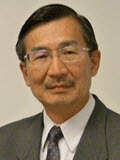
Resilience has become a buzzword in civil engineering circles, but for Gary Y.K. Chock, the concept is nothing new. Across a 35-year career, it has been part of what he considers good, fundamental common engineering sense.
“I’m really averse to the idea that we have to wait until people pay with economic losses or even their lives prior to there being a motivating factor to making improvements,” Chock said. “Engineers are supposed to be designing buildings to protect them from future events. We’re not supposed to be waiting and then working afterwards to prepare for a repeat of the last disaster that we had. So the wait-and-see attitude is unacceptable.”
That focus on resilient engineering has made Chock, S.E., D.CE, F.SEI, Dist.M.ASCE, an international leader in multihazard analysis and planning, and a deserving addition to the 2016 class of ASCE Distinguished Members.
His passion to learn and understand more about resilience and hazard mitigation planning has taken him to the scenes of post-earthquake, tsunami, and hurricane devastation to conduct research. Chock led and took part in field surveys following the 2011 Great East Japan earthquake and Tohoku tsunami, the 2010 Chile earthquake and tsunami, and the 2006 Kiholo Bay earthquake in Hawaii.
“I have long thought that engineers need to be broad-based in terms of their knowledge,” Chock said. “They also need to have experience in being a witness to human suffering, particularly with respect to learning from disasters. I think engineers should try to incorporate that into their careers. It’s irreplaceable experience to see where things failed and people suffered.”
“I don’t believe you could call yourself an expert in those fields unless you’ve been to the aftermath of those events. Those things can’t be learned just by reading the paper or watching the television.”
As chair of the ASCE 7 Subcommittee on Tsunami Loads and Effects, he was a driving force behind development of the tsunami loads and effects chapter in the forthcoming standard ASCE 7-16 Minimum Design Loads and Associated Criteria for Buildings and Other Structures. This innovative work within ASCE began in the months prior to the 2011 Tohuku tsunami.
“Engineers are a key linkage to the public, because we do have the ability to understand scientific literature that’s appropriate to our work, to delve deeper into a body of knowledge, understand the ramifications of it, and determine how we should proceed in the future,” Chock said. “We’re the only ones who can translate that information into infrastructure and the built environment for the public. That’s the key role that we fulfill.”
Among his many honors, Chock received the ASCE Hawaii Chapter Outstanding Civil Engineering Achievement Award in 2010, the Western States Seismic Policy Council Lifetime Achievement Award in 2014, and the ASCE Structural Engineering Institute’s Walter P. Moore Award for technical expertise in and dedication to the development of structural codes and standards.
His interest in risk analysis began while pursuing his master’s degree at Stanford University.
“I really became convinced that in order to be a good engineer, you need to understand the basis of everything you’re using in terms of codes and standards,” Chock said. “Not total faith in what is written. An engineer should not be a tradesman. I felt that what engineering needs to be is more than trial and error, much more than just skillful tradespeople learning from trial and error.” He credits professors Haresh Shah and Helmut Krawinkler for their influence.
Chock sought a deeper understanding of physics and a mastery of the fundamentals that would produce more resilient design.
“If you just accept everything without that understanding, you could potentially go through your whole career designing buildings that people could later find were inadequate,” Chock said. “Luckily I was able to work in firms that I thought had a little more foresight.”
Distinguished Membership is the highest honor ASCE can bestow. It is reserved for civil engineers who have attained eminence in some branch of engineering or in related arts and sciences, including the fields of engineering education and construction.
The 2016 class of Distinguished Members will receive their honors at the ASCE 2016 Convention, Sept. 28 through Oct. 1, in Portland, OR.
Read about each of the 2016 Distinguished Members.

